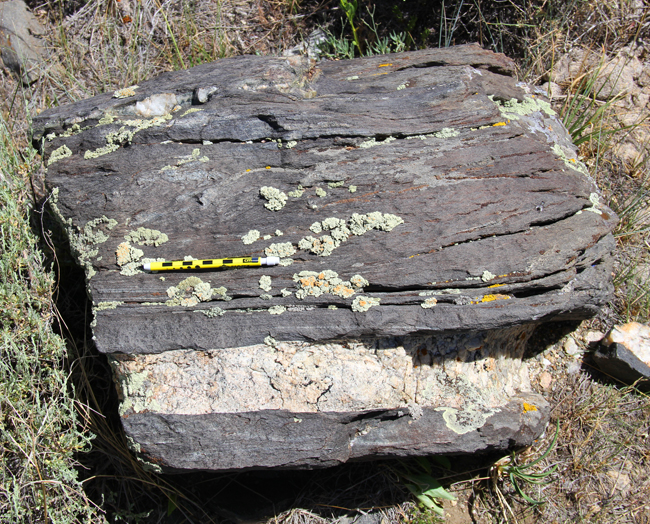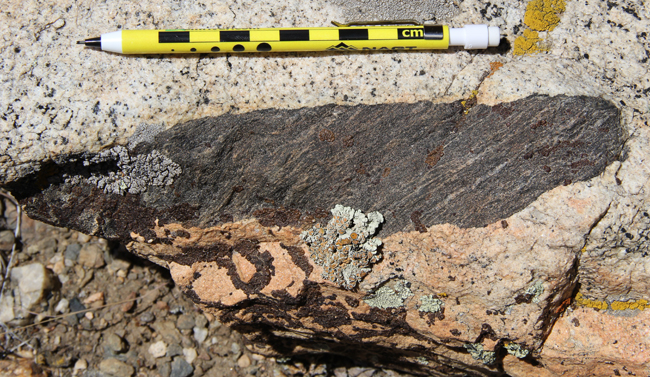1 July 2013
Using your relative dating prowess to determine which of these two rock units is older, the schist (dark gray) or the granite (light pink):
 Click to enlarge
Click to enlarge
 Click to enlarge
Click to enlarge
Justify your answer by citing a principle of relative dating.
Posted in:
geologic time, granite, metamorphism
Well, I don’t know how to state the principle, but I think the schist had to be in place and a rock for the granite to intrude–so the schist is older is my guess . . . What do I win?
To agree with Mary – the first photo looks to my naive eye like an intrusion of the granite into the schist. The second looks like an inclusion of the schist within the granite — a piece of schist that was broken off and mixed into the proto-granite — which I think is also an indication that the schist is older. (It’d be pretty difficult for a blob of schist to embed itself into a preexisting granite, without any way to get there.) Right?
I think it’s pretty obvious that the schist is older – the granite seems to cut the metamorphic foliation.
The schist is older. Inclusions are always older than surrounding country rock. Also, the juxtaposition of a met rock with ig rock – meta rock had to be in place first – dead giveaway.
Law of Crosscutting Relationships
The schist is a metamorphic rock that formed as a result of heat and/or pressure applied to a sedimentary or igneous rock. Schist is a metamorphosis of an existing rock. It doesn’t flow. The granite is an igneous rock that is formed by magma underground that moves and cuts across existing rock layers. The granite cut through the schist.
The schist is older à la the law of cross-cutting relationships.
Where can one find a pencil like that?
The schist is older à la the law of crosscutting relationships.
Where can one find a pencil such as that?
Principle of Superposition: first pic, schist on top of granite (mostly), hence younger. Second pic, granite on top of schist (mostly), hence younger. Conclusion: they’re coeval… roughly.
The shist has to be older. The clincher for me in terms of “geological principles” was the plate of schist being levered away into the still molten granite in the lower right corner of the big picture. I’m guessing the lower picture shows a zoom in of a similar inclusion? It also looks like the grainsize of the granite fines up to its edges, suggesting it’s an intruded igneous sheet.
Maybe more pertinently though, this is surely a test of geological common sense. Quite how you’d include a large slab of parallel sided, already lithified granite into a mudstone succession as it formed, I don’t know.
The granite cuts through the schist in first photo, and cuts the schist’s foliation in the second. The principle of cutting states, “when one feature cuts another, the feature *being* cut is older, the feature *doing* the cutting is younger”. Another way of putting it is that the older feature had to be there before the younger feature could cut it. So Mary is correct: the schist is older, and the granite is younger.